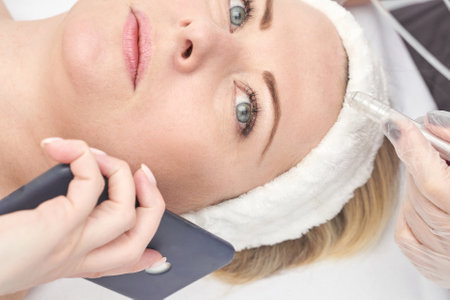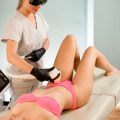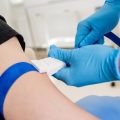Introduction to Laser Hair Removal in the UK
Laser hair removal has rapidly evolved from a niche cosmetic procedure to a mainstream solution for long-term hair reduction across Britain. As British beauty standards continue to shift towards convenience, personalisation, and inclusivity, more individuals are seeking advanced methods to manage unwanted hair. Laser hair removal appeals not only for its lasting results but also for its adaptability to different skin types and lifestyles. The treatment’s rising popularity can be attributed to technological advancements, increased awareness of aesthetic treatments, and the desire for a low-maintenance grooming routine that aligns with modern British living. In cities from London to Manchester and beyond, clinics offering laser hair removal are now commonplace, reflecting how this technology has become an integral part of British beauty culture. Whether motivated by aesthetics, comfort, or the pursuit of smoother skin, people across the UK are embracing laser hair removal as a trusted, effective solution tailored to diverse needs.
2. How Laser Hair Removal Works
Laser hair removal is a technologically advanced cosmetic procedure that targets unwanted hair by using concentrated light energy. The fundamental principle involves directing a laser beam at the pigment (melanin) within the hair follicle. The absorbed light energy heats up and damages the follicle, effectively inhibiting future hair growth while leaving the surrounding skin unharmed.
Technical Overview of the Procedure
The process begins with the application of a cooling gel or device to protect the outer skin layer. Next, a handheld laser instrument emits pulses of highly focused light into the treatment area. Each pulse lasts only a fraction of a second and can treat multiple hairs simultaneously. Most individuals require several sessions, as hair grows in cycles and lasers are most effective on follicles in their active growth phase (anagen).
Types of Lasers Used in Britain
The choice of laser technology is critical for efficacy and safety, especially given Britains diverse population. The following table summarises the main types of lasers used for hair removal across different skin tones:
| Laser Type | Wavelength (nm) | Best Suited For | Advantages |
|---|---|---|---|
| Alexandrite | 755 | Lighter skin tones (Fitzpatrick I-III) | Fast, effective for large areas |
| Diode | 800-810 | Lighter to medium skin tones (Fitzpatrick II-IV) | Penetrates deeply, suitable for coarse hair |
| Nd:YAG | 1064 | Darker skin tones (Fitzpatrick IV-VI) | Minimal risk of pigmentation changes, safest for dark skin |
| Ruby | 694 | Lighter skin tones (Fitzpatrick I-II) | Effective on fine, light hair; less commonly used today |
Advancements Relevant to Different Skin Types
The UK’s multicultural demographic necessitates tailored approaches to laser hair removal. Recent advancements focus on optimising energy settings and cooling mechanisms to reduce risks such as hyperpigmentation or burns among those with darker complexions. Modern devices often feature dynamic cooling systems, real-time melanin readers, and variable pulse durations to maximise both comfort and results for every skin type.
Key Considerations for British Clients
Practitioners in Britain typically conduct thorough consultations to assess skin type according to the Fitzpatrick scale before selecting an appropriate laser system. This ensures both safety and efficacy regardless of whether clients have fair Celtic skin or deeper Afro-Caribbean complexions.
Summary Table: Laser Suitability by Skin Type
| Skin Tone (Fitzpatrick Scale) | Recommended Laser(s) |
|---|---|
| I-II (Very fair to fair) | Alexandrite, Diode, Ruby |
| III-IV (Medium to olive) | Diode, Nd:YAG |
| V-VI (Brown to black) | Nd:YAG exclusively |
This technical approach ensures that all individuals seeking laser hair removal in Britain benefit from cutting-edge technology tailored to their unique skin requirements.
![]()
3. Suitability Across Skin Types and Tones
Laser hair removal has evolved significantly, now offering effective solutions for a broader range of skin types and tones—a vital consideration in Britain’s diverse population. Historically, traditional laser systems were most effective on lighter skin with dark hair, due to the contrast allowing the laser to easily target melanin in the hair follicle. However, with technological advancements, newer devices such as Nd:YAG and diode lasers have expanded suitability, making treatments safer and more reliable for individuals with medium to darker skin tones.
For those with fair or porcelain complexions commonly found across Britain, Alexandrite lasers are often recommended due to their precision and efficacy. Meanwhile, people with olive or darker skin—reflective of the UK’s multicultural makeup—tend to achieve optimal results with Nd:YAG technology. This specific wavelength penetrates deeper into the skin while bypassing the epidermal melanin, reducing the risk of pigmentation changes or burns that can affect those with higher melanin levels.
It is crucial for anyone considering laser hair removal in Britain to undergo a thorough assessment by a trained practitioner. Patch testing remains standard practice to gauge individual response and minimise side effects. Moreover, practitioners should tailor parameters based on both Fitzpatrick skin type and personal factors such as tanning habits or underlying skin sensitivities.
With proper evaluation and the right equipment, laser hair removal is now accessible and effective for all British complexions—whether you’re fair-skinned from Edinburgh or possess a deeper skin tone typical of London’s cosmopolitan communities. The key lies in selecting an experienced clinic familiar with treating the full spectrum of UK skin types, ensuring safe, consistent results aligned with modern expectations of inclusivity and efficacy.
4. Choosing a Reputable Clinic in Britain
When it comes to laser hair removal, selecting a reputable clinic is crucial, especially given the diverse regulations and standards within the UK. Making an informed decision not only ensures safety but also maximises the effectiveness of your treatment. Below, we explore key factors unique to Britain that you should consider before committing to a provider.
UK-Specific Regulations and Compliance
Britain has specific guidelines governing cosmetic procedures, including laser hair removal. Clinics in England are regulated by the Care Quality Commission (CQC) if they offer treatments involving medical-grade lasers. In Scotland, Wales, and Northern Ireland, local health authorities set their own requirements. Ensuring your chosen clinic complies with these regulations is essential for both legal and safety reasons.
Key Regulatory Bodies in the UK
| Region | Regulatory Body | Clinic Registration Required? |
|---|---|---|
| England | Care Quality Commission (CQC) | Yes (for medical lasers) |
| Scotland | Healthcare Improvement Scotland (HIS) | Yes |
| Wales | Healthcare Inspectorate Wales (HIW) | Yes |
| Northern Ireland | Regulation and Quality Improvement Authority (RQIA) | Yes |
Practitioner Qualifications and Experience
The practitioner’s expertise is paramount to ensuring safe and effective results. Look for clinics where staff hold recognised qualifications such as NVQ Level 4 or above in Laser and Light Treatments, or equivalent certifications accredited by British professional bodies. Additionally, practitioners should have robust training records and experience treating your particular skin type—this is especially vital for darker skin tones or sensitive skin.
What to Look for in a British Context
- CQC or regional registration: Verify that the clinic is listed on relevant public registers.
- Bespoke consultations: Leading UK clinics offer personalised assessments to determine suitability for treatment, considering British skin type diversity.
- Sterile environment: Cleanliness is strictly enforced under UK regulations—inspect treatment rooms during your initial visit.
- Transparent pricing: Reputable clinics will provide a clear breakdown of costs with no hidden extras, reflecting typical British consumer protection standards.
- Aftercare support: Good clinics outline comprehensive aftercare tailored to the local climate and lifestyle factors found across Britain.
- Client testimonials: Seek out independent reviews from platforms such as Trustpilot or Google Reviews, which are widely used in the UK.
Summary Table: Key Factors When Selecting a British Clinic
| Factor | Description/UK Consideration |
|---|---|
| Regulatory Compliance | CQC/HIS/HIW/RQIA registration depending on region; legal requirement for medical-grade lasers. |
| Practitioner Credentials | NQV Level 4+ or equivalent; continuous professional development expected. |
| Treatment Suitability Assessment | Bespoke consultation processes reflecting Britain’s diverse population. |
| Sterility & Safety Standards | MUST adhere to strict UK hygiene protocols. |
| Pricing Transparency | No hidden fees; itemised quotes as per British best practice. |
| User Reviews & Reputation | Praise on independent UK-based review sites; high client satisfaction ratings. |
| Bespoke Aftercare Support | Treatment follow-ups tailored to British weather and lifestyles. |
By prioritising these uniquely British considerations when choosing your laser hair removal clinic, you can ensure both safety and optimal results throughout your treatment journey.
5. Preparing for Your Treatment
Effective preparation is essential for achieving the best results from laser hair removal, particularly in Britain where lifestyle and seasonal shifts can play a significant role. Below are best practices tailored to British clients and their unique needs.
Consultation: The First Step
Before your first session, it’s vital to book a thorough consultation with a reputable practitioner. Here in the UK, many clinics offer patch tests to assess skin reactions and ensure safety, especially given the diversity of skin types found across Britain.
Avoid Sun Exposure
The unpredictable British weather means you may not always be at risk of excessive sun exposure, but even intermittent sunshine—especially during spring and summer—can increase sensitivity. Use a broad-spectrum SPF daily on areas to be treated and avoid tanning beds for at least four weeks prior to your appointment.
Shaving vs. Waxing
While waxing is popular in some British circles, it’s crucial to shave the treatment area 24 hours before your session instead. Shaving preserves the hair follicle necessary for effective laser targeting, whereas waxing removes it entirely. Avoid plucking or using depilatory creams as well.
Mind Your Skincare Products
Banish retinoids, glycolic acids, and other harsh exfoliants from your regimen at least one week before treatment. Many Brits favour robust skincare routines due to colder climates and central heating; double-check ingredient lists to prevent irritation.
Timing Around Social Events
If you’re planning treatments ahead of holidays or events like summer getaways or Christmas parties—a common practice in the UK—allow adequate time for any redness or swelling to subside. Most recommend scheduling sessions at least two weeks before key dates.
Stay Hydrated and Calm
The British climate can often be dehydrating, especially in winter months. Drink plenty of water and keep your skin moisturised leading up to your appointment for optimal results.
Dressing for Comfort
On treatment day, wear loose-fitting clothing to prevent irritation post-session. This advice is particularly pertinent if attending work or social activities afterwards—a frequent scenario in busy British urban life.
By taking these tailored steps, you’ll be well-prepared for laser hair removal within the context of Britain’s distinctive lifestyle and seasonal influences, maximising both comfort and efficacy throughout your treatment journey.
6. What to Expect: Treatment Experience and Recovery
Step-by-Step Walkthrough of the Laser Hair Removal Process
Before your first laser hair removal session in Britain, you will typically undergo a thorough consultation with a qualified practitioner. This is an essential step to assess your skin type, hair colour, and medical history—crucial factors in choosing the right laser technology for safe and effective results. On the day of treatment, the target area will be cleansed and may be shaved if necessary. Protective goggles are provided to shield your eyes from the lasers light. The practitioner will then adjust the device settings according to your skin and hair characteristics and perform a patch test to ensure there are no adverse reactions.
The Treatment Experience
During the procedure, you may feel mild discomfort akin to a rubber band snapping against the skin—most UK clients describe this as tolerable rather than painful. Sessions can last anywhere from 10 minutes for smaller areas like the upper lip, to an hour or more for larger zones such as legs or back. Cooling devices or gels are often used to minimise discomfort and protect the skin. After each pass of the laser, you might notice slight redness or swelling, which usually subsides within a few hours.
Aftercare Recommendations
Post-treatment care is key to achieving optimal results while avoiding complications. It’s recommended that you avoid hot showers, saunas, and vigorous exercise for at least 24 hours. Applying a soothing aloe vera gel can help calm irritation. Sun exposure should be minimised, and broad-spectrum SPF 30+ sunscreen is advised on all exposed treated areas—even during Britains cloudier months. Most clinics advise steering clear of perfumed products and exfoliating agents for several days following each session.
Addressing Common Concerns Among UK Clients
Many British clients have questions about downtime and when they can return to daily activities; most find they can resume work and social engagements immediately post-session, as visible side effects are minimal. Another frequent concern is how many sessions are required—typically 6-8 treatments spaced 4-6 weeks apart are needed for long-lasting reduction, with maintenance sessions as advised by your practitioner. If you experience unusual blistering or prolonged redness, it’s important to contact your clinic promptly for guidance.
With advanced technology now catering for all skin types and tones across Britain, laser hair removal offers a reliable solution for those seeking smoother skin with minimal recovery time.
7. Trends and Innovations in the UK Market
The landscape of laser hair removal in Britain is evolving rapidly, driven by both technological advancements and changing consumer preferences. Understanding these trends is crucial for anyone considering treatment or operating within the sector.
Technological Breakthroughs
In recent years, the UK has seen a surge in clinics adopting next-generation laser systems. Devices utilising dual-wavelength technology—such as Alexandrite combined with Nd:YAG lasers—are now widely available. These systems offer greater efficacy across all skin types, particularly benefitting those with darker skin tones that historically faced limitations with older devices. Additionally, advancements in cooling mechanisms have improved patient comfort and reduced post-treatment downtime.
Personalisation and Inclusivity
There is a notable shift towards tailored treatment protocols. Practitioners now use sophisticated skin analysis tools to assess individual characteristics, ensuring optimal settings for safety and results. This personalised approach has made laser hair removal more accessible and effective for clients with a diverse range of skin tones and hair types found across Britains multicultural population.
Rise of At-Home Devices
The UK market has also witnessed the proliferation of at-home IPL (Intense Pulsed Light) and laser devices. While professional treatments remain superior in terms of power and precision, these consumer-grade options are attracting those seeking convenience or maintenance between clinic sessions. Regulatory bodies such as the MHRA are actively monitoring this segment to ensure consumer safety and product efficacy.
Eco-Conscious & Ethical Practices
With sustainability high on the British agenda, many clinics are embracing eco-friendly practices—from energy-efficient equipment to cruelty-free aftercare products. Clients are increasingly selecting providers whose values align with their own, pushing the industry towards greener operations and transparent ingredient sourcing.
Future Outlook
Looking ahead, expect continued investment in AI-driven diagnostic tools, further personalisation of treatment plans, and integration with digital platforms for remote consultations. The demand for non-invasive aesthetic procedures remains robust in Britain, suggesting that laser hair removal will continue its trajectory as a staple self-care solution—adapted to serve an even broader demographic with ever-improving outcomes.


